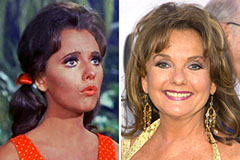The legitimate and social status of Scottish barons was strongly linked with the concept of baronia, or barony, which referred to the landholding it self rather than particular title. A barony was a heritable house, and the possessor of such lands was acknowledged as a baron, with all the current worker rights and responsibilities. This technique differed from the English peerage, wherever brands were often particular and might be revoked or modified by the monarch. In Scotland, the baronial position was inherently associated with the land, indicating that when the lands were offered or inherited, the new manager immediately assumed the baronial rights. This created a diploma of security and continuity in regional governance, as baronial authority was associated with the property rather than the individual. The crown sporadically given charters confirming baronial rights, particularly in cases when disputes arose or when new baronies were created. These charters usually given the exact rights of the baron, including the right to put on courts, exact particular expenses, and even create fortifications. The baronial courts were an integral facet of this technique, managing small civil and criminal instances within the barony and reducing the crown of the burden of administering justice at the local level. With time, however, the jurisdiction of these courts was gradually curtailed whilst the regal justice program widened, particularly following the Union of the Crowns in 1603 and the final political union with England in 1707.
The political impact of the Scottish baronage was most evident in the medieval parliament, wherever barons were estimated to attend and participate in the governance of the realm. Initially, parliament was an relaxed getting of the king's important vassals, including earls, barons, and elderly clergy, but by the 14th century, it'd developed into a more conventional institution with identified procedures. The lesser barons, however, usually discovered it problematic to wait parliament due to the prices and distances included, and in 1428, James I attempted to improve their participation by letting them opt associates rather than attending in person. This development set the groundwork for the later variation involving the peerage and the shire commissioners in the Scottish parliament. The higher barons, meanwhile, extended to sit as individuals, frequently building a strong bloc within the political landscape. The baronage performed a critical position in the turbulent politics of old and early contemporary Scotland, including the Conflicts of Liberty, the problems between the top and the nobility, and the conflicts of the Reformation era. Several barons were essential followers of numbers like Robert the Bruce and Mary, Double of Scots, while the others arranged themselves with rival factions, highlighting the fragmented and frequently volatile nature of Scottish politics.
The Reformation in the 16th century brought significant changes to the Scottish baronage, as religious categories intersected with existing political and cultural tensions. Many barons embraced Protestantism, viewing it as a way to fight the impact of the top and the Catholic Church, while others stayed loyal to the previous faith. The resulting issues, such as the Conflicts of the Covenant in the 17th century, found barons playing primary functions on both sides. The abolition of episcopacy and the establishment of Presbyterianism further altered the partnership between the baronage and the state, as standard resources of patronage and energy were reconfigured. The union of the caps in 1603, which brought John VI of Scotland to the British throne as Wayne I, also had profound implications for the baronage. As the Scottish nobility acquired access to the broader political and cultural world of the Stuart realms, additionally they Baronage of Scotland raising pressure to comply with English norms and practices. This tension was particularly apparent in the years before the 1707 Behave of Union, when several Scottish barons and nobles were separated around the problem of unification with England. Some saw it as an economic and political prerequisite, while the others anticipated the increased loss of Scottish autonomy and the dilution of their own influence.
The Act of Union in 1707 noted a turning level for the Scottish baronage, as the dissolution of the Scottish parliament and the merger of the 2 kingdoms into Great Britain fundamentally improved the political landscape. Whilst the Scottish appropriate process and several facets of landholding stayed distinctive, the barons today operated within a broader English framework, with possibilities and challenges that have been greatly different from these of the pre-Union era. The 18th and 19th centuries found the continuous drop of old-fashioned baronial powers, as the centralization of government, the reform of the legitimate program, and the industrialization of the economy eroded the feudal foundations of the baronage. The Heritable Jurisdictions Behave of 1747, which used the Jacobite uprising of 1745, was particularly significant, since it removed the rest of the judicial powers of the barons, transferring their power to the crown. This legislation effectively concluded the age of the baronage as a governing school, although the subject of baron and the social prestige connected with it persisted. In the present day era, the definition of “baron” in Scotland is essentially ceremonial, with no legitimate or governmental power mounted on it. Nevertheless, the famous heritage of the baronage stays an essential element of Scotland's cultural and appropriate history, reflecting the complex interaction of area, energy, and identity that formed the nation's development. The analysis of the Scottish baronage offers valuable insights to the progress of feudalism, the nature of local governance, and the bro
 Jake Lloyd Then & Now!
Jake Lloyd Then & Now! Kenan Thompson Then & Now!
Kenan Thompson Then & Now! Dawn Wells Then & Now!
Dawn Wells Then & Now! Katey Sagal Then & Now!
Katey Sagal Then & Now! Nicki Minaj Then & Now!
Nicki Minaj Then & Now!